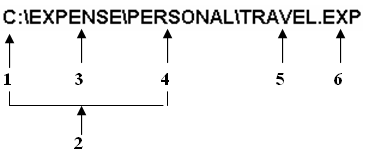File naming rules
File naming rules refer to the guidelines that dictate how files should be named on a computer system. These rules are important for organizing files and ensuring that they can be easily found and managed.
Some common file naming rules include:
Use meaningful names: File names should be descriptive and indicate the contents of the file. Avoid using generic names like “document” or “file”.
Use only letters, numbers, and underscores: File names should only contain letters (both upper and lower case), numbers, and underscores (_). Avoid using special characters or spaces in file names, as these can cause errors when trying to access or manipulate the file.
Keep file names short: File names should be kept as short as possible while still conveying the necessary information. Long file names can make it difficult to view or manage files in certain applications or on certain devices.
Use consistent naming conventions: File names should be named using a consistent convention, such as starting with a date or using a specific prefix or suffix to indicate the type of file.
Avoid using reserved words: Certain words, such as “con” or “aux”, are reserved by the operating system and should not be used as file names.
By following these file naming rules, users can create a well-organized and easily searchable file system on their computer.
The file name and extension are separated by a dot (.). File name can have a maximum of 8 characters and the extension can have 3 characters. The file name is valid if it has no extension. File names comprise of alphabet, numeral and other characters ($, #, &, @, !, %, (), -, _, {}, ‘, ~, ^)

- Is the drive name.
- is the path (route which DOS has to take to reach the path)
- is the directory under the root directory, beginning from which the file has to be accessed.
- is the subdirectory under the directory mentioned in 3 (3 is the parent directory).
- is the primary name of the file to be accessed.
- is the extension name of the file to be accessed.
Expense, which is under the root directory (“\”), and a subdirectory Personal contains the file. The \(backslash) is a convention to trace the path.
Apply for Data Entry Operator Certification Now!!
https://www.vskills.in/certification/certified-data-entry-operator

